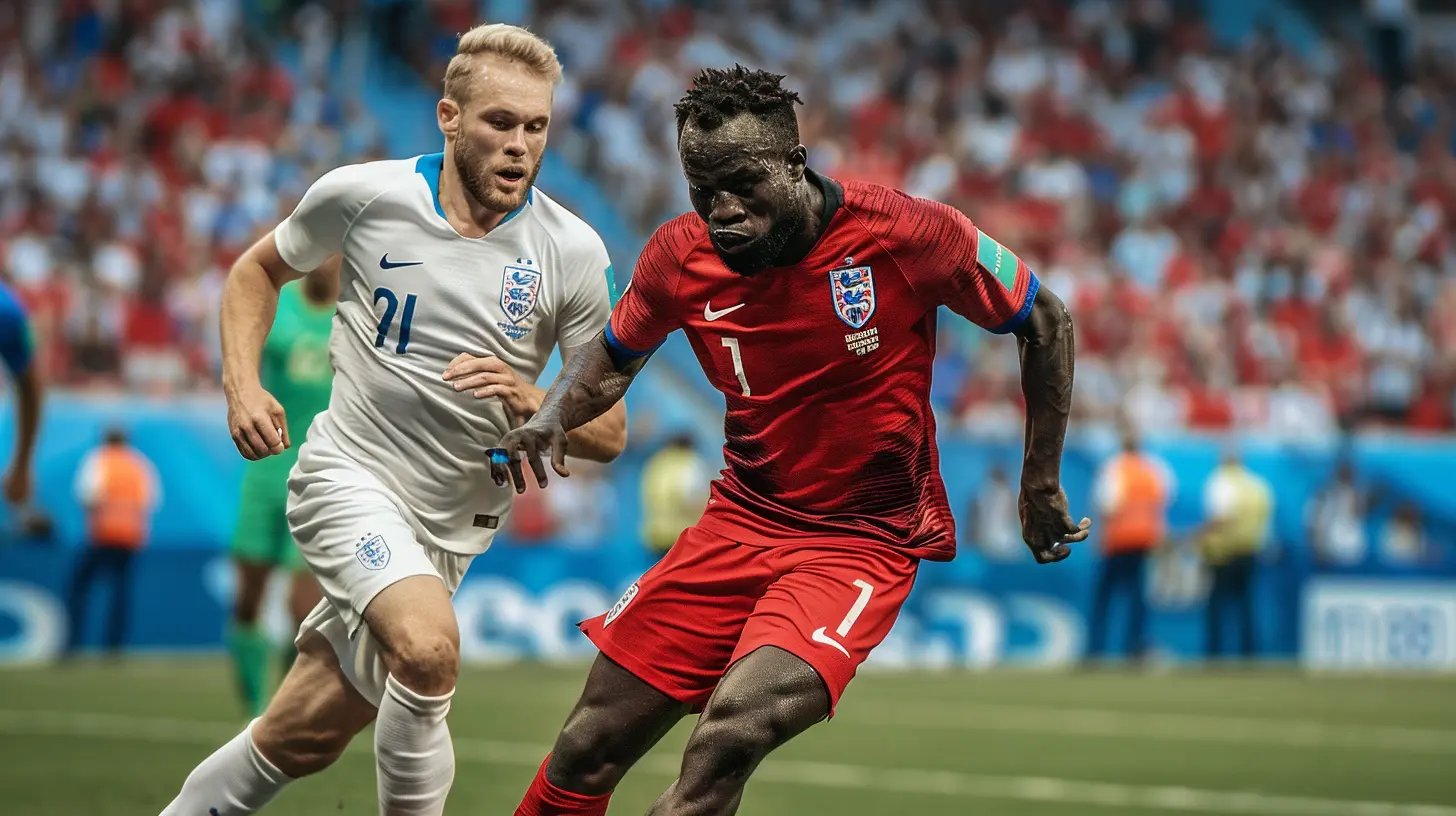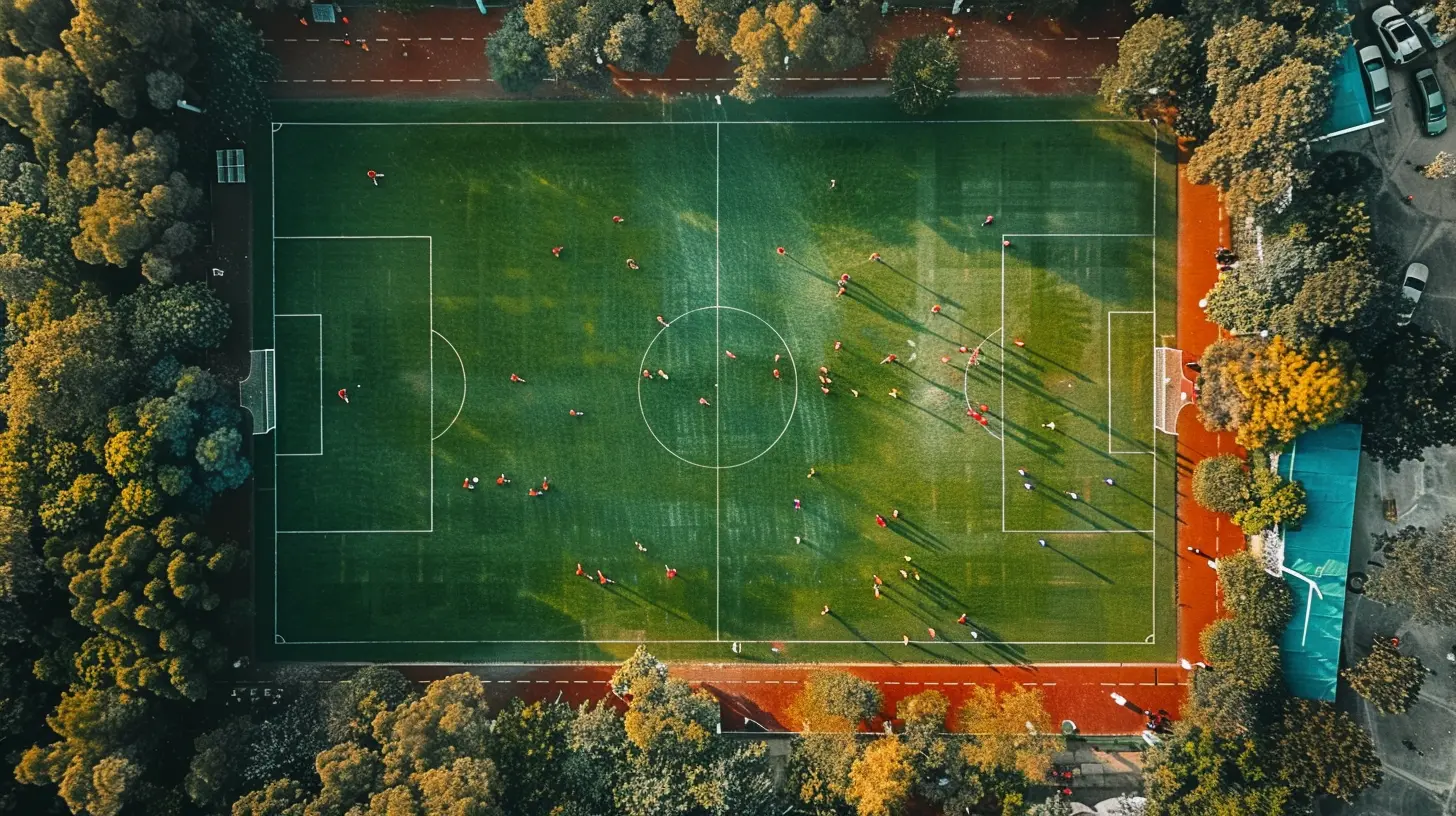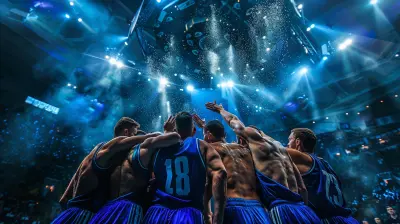The Role of Wingbacks in Shaping the Game’s Outcome
3 August 2025
Let’s be real — if you’re just casually watching a football (soccer) match, it’s easy to miss the impact wingbacks make. They’re not always the flashiest players on the pitch. They're not consistently scoring 30-yard screamers or pulling off jaw-dropping skills. But you know what? Wingbacks can absolutely tilt a game’s outcome. In today’s football landscape, these players are low-key some of the most influential figures on the field.
But what exactly is a wingback? How is their role different from a fullback or a winger? And how do they influence the entire flow of the game? Grab your favorite jersey — we’re diving deep into the role of wingbacks, their tactical importance, and how they’re shaping match outcomes behind the scenes.
What Is a Wingback, Really?
Alright, let’s clear up any confusion. A wingback is kinda like the love child of a fullback and a winger. They’re defenders, technically, but they often get forward like they’re attackers.Typically used in formations like 3-5-2 or 3-4-3, wingbacks are positioned wide — hugging the touchline — and they’ve got one of the toughest jobs in the game. They have to defend like fullbacks AND attack like wingers. Yep, it’s exactly as exhausting as it sounds.
So next time you're watching a game and see a player bombing up the sideline, whipping in a cross, and then tracking back 30 yards to make a sliding tackle — that’s a wingback working overtime.
How Wingbacks Have Evolved (Spoiler: They've Come a Long Way)
Back in the day, fullbacks stayed back, and wingers did the running up top. But football’s evolved. Tactical systems got funkier, and suddenly teams needed players who could do it all. That’s where wingbacks came in.Think of legends like Cafu and Roberto Carlos. These guys were the blueprint. Fast-forward to today, and you've got players like Trent Alexander-Arnold, Alphonso Davies, Joao Cancelo, and Reece James redefining the role. They’re not just defenders anymore — they’re creators, playmakers, and a club’s secret weapon.
The Wingback’s Toolkit – What Do They Need to Be Elite?
If being a winger is like sprinting a marathon, and being a defender is like doing it backward — being a wingback is doing both… at the same time… with your shoelaces tied together.So yeah, it’s intense. And to stand out in that role, here’s what a wingback needs in the locker:
🔥 Speed & Stamina
These guys run more than anyone on the pitch. Non-stop sprints, up and down the flanks, all game long. If you’re not built like a machine, good luck keeping up.🎯 Crossing Ability
Modern football thrives on width, and wingbacks are often the primary source of crosses. Having a pinpoint delivery can literally change the tide of a game.🧠 Tactical Awareness
You can’t just run around like a headless chicken. Wingbacks need to know when to stay back, when to push forward, and how to exploit space intelligently.🧱 Defensive Solidity
Let’s not forget — they’re still defenders. That means knowing when to time a tackle, track back, cover space, and win duels.🪄 Technical Skills
Dribbling, passing, control under pressure — a good wingback should have the finesse of a midfielder. They’re often involved in build-up play, so keeping the ball is key.
How Wingbacks Impact Game Outcomes
Okay, so we know wingbacks are essentially Swiss Army knives for modern football tactics. But how exactly do they tilt the scales of a match? Let’s dig deeper.1. Creating Width = Creating Chaos
When teams pack the middle of the field, the wings become prime real estate. Wingbacks stretch the field, create overloads, and force defenders to step out of position. That chaos? It opens up passing lanes, shooting opportunities, and makes things very uncomfortable for the opposing defense.2. Transition Game Masters
Transition is where games are often won or lost. Wingbacks are crucial in both attacking and defensive transitions. One moment they’re intercepting a pass and launching a counter, the next they’re whipping in an assist. Their speed and positioning can flip the script in a heartbeat.3. Defensive Cover & Press Resistance
On defense, wingbacks help cover the wide channels, which is essential against teams that love to attack down the flanks. They also act as pivot points for recycling possession under pressure — a small play from a wingback can relieve pressure and start a fresh attack.4. Assists, Goals, and the Final Ball
Don’t sleep on their stats. Wingbacks now regularly rack up assists and even goals. Just look at how players like Hakimi or Theo Hernandez contribute. Their final ball is often as valuable as a striker's finish.Wingbacks in Big Games – The X-Factor
Want proof that wingbacks shape outcomes? Look at the big games over the past five years.Remember how Chelsea won the Champions League in 2021? Their wingbacks — Ben Chilwell and Reece James — were phenomenal. They kept width, shut down opposition attacks, and controlled the tempo on the flanks.
Or how about Liverpool’s title run in 2019-2020? Trent and Robertson weren’t just part of the defense. They were Liverpool’s creative engines. They ended that season with more assists than most midfielders.
In games where margins are razor-thin, wingbacks often make the difference — stretching the pitch, creating passing angles, and exploiting spaces others didn’t even notice.
The Tactical Revolution – Why Managers Love Wingbacks
Managers are obsessed with control. They want to dominate space, control tempo, and overwhelm opponents. And wingbacks give them that edge.In a 3-4-3 or 3-5-2 system, wingbacks provide natural width without sacrificing midfield numbers. It’s like having your cake and eating it too.
And here’s something interesting: by pushing wingbacks high, managers can pin back opposition fullbacks. That limits counterattacks and allows their own creative players more freedom in central zones.
It’s chess, not checkers.
Famous Wingbacks and Their Signature Styles
Let’s give a quick shoutout to some modern masters of the craft and how they uniquely influence games:● Trent Alexander-Arnold (Liverpool)
More of a playmaker than a traditional defender. Known for his breathtaking crosses and long-range passing, Trent’s role is so unique it’s forced tactical reinventions.● Alphonso Davies (Bayern Munich)
A blur on the pitch. Davies’ pace and dribbling ability make him lethal on the break. He’s revolutionized what we expect from a left-sided wingback.● Achraf Hakimi (PSG)
A true end-to-end menace. Hakimi combines blistering pace with supreme technical skill — making him one of the most dangerous wingbacks in the world.● Reece James (Chelsea)
The full package. Strength, delivery, defensive grit, and attacking flair. James is the definition of a complete wingback.The Future of the Wingback Position
Where do we go from here? Honestly, the wingback role is only going to get more important.Tactical trends are leaning into fluid systems. Managers want versatility, and wingbacks offer just that. They’re defenders, attackers, midfielders — all rolled into one.
We might even start seeing inverted wingbacks becoming more common — players who drift inside to become extra midfielders during build-ups (think Joao Cancelo at City). It’s wild, but it works.
And with the rise of analytics and GPS tracking, teams know just how vital these players are. Expect more development academies to train wingbacks specifically, not just retrain old fullbacks into the role.
So, Do Wingbacks Really Shape the Game’s Outcome?
Absolutely. They’re not just side pieces anymore — they’re central to how modern football is played.They dictate width, manage transitions, offer attacking outlets, and plug defensive holes. If a team’s wingbacks are on fire, the whole system clicks. If they’re off, it can fall apart like a house of cards.
So next time you watch a game, keep an eye on those wide runners. You'll quickly see: the role of wingbacks isn’t just significant — it might be one of the most crucial in today’s tactical landscape.
And hey, if you're ever building a team in FIFA or Football Manager... don’t skimp on your wingbacks. Trust me.
all images in this post were generated using AI tools
Category:
Game AnalysisAuthor:

Preston Wilkins
Discussion
rate this article
1 comments
Sablethorn Miller
Wingbacks are pivotal in modern football, blending defensive solidity with offensive support. Their ability to control the flanks, provide width, and contribute to both defense and attack fundamentally alters team dynamics, often determining the outcome of matches in tightly contested scenarios.
August 23, 2025 at 10:27 AM

Preston Wilkins
Thank you for your insightful comment! I completely agree—wingbacks truly redefine team dynamics, balancing defense and attack to influence match outcomes.


